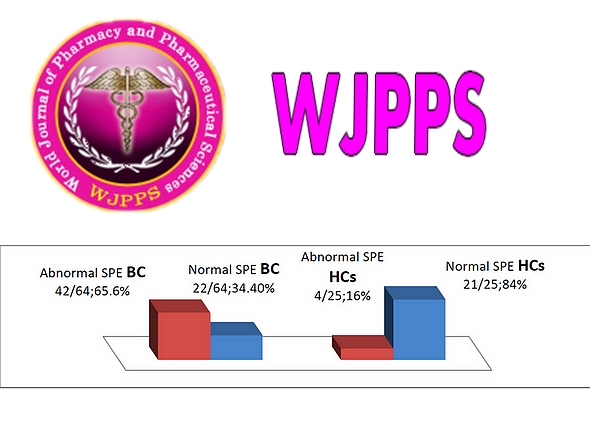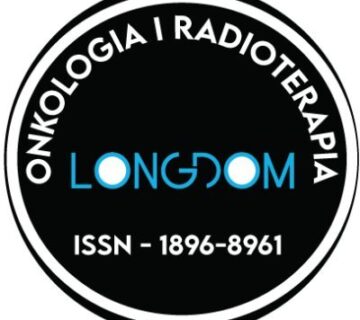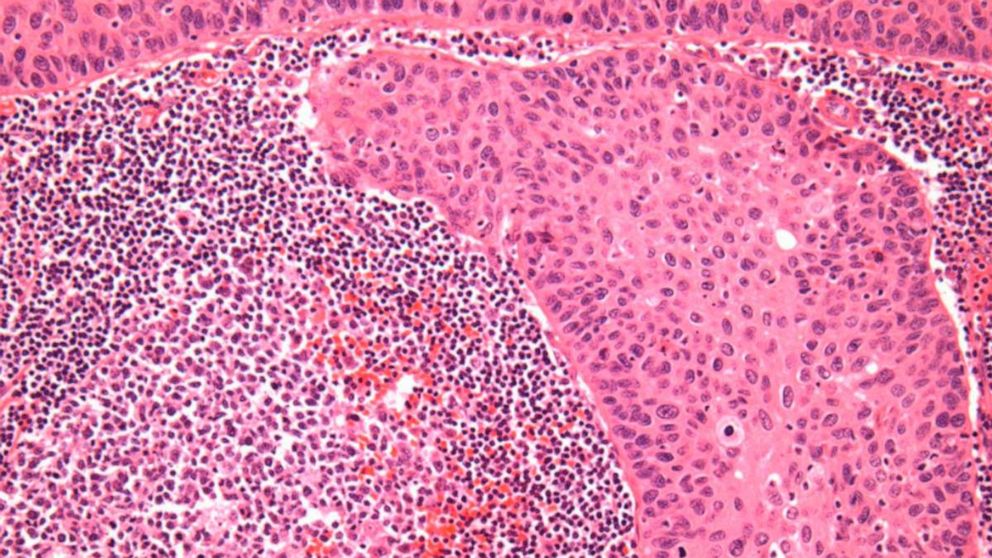THE QUANTITATIVE LEVELS OF SERUM BRCA1, TOTAL PROTEIN, ALBUMIN, AND SERUM PROTEIN ELECTROPHORESIS PATTERN AS A NOVEL BIOMARKERS OF BREAST CANCER CORRELATING IN THE FAMILIAL BREAST CANCER PATIENTS IN IRAQ.
WORLD JOURNAL OF PHARMACY AND PHARMACEUTICAL SCIENCES
د. علياء اسماعيل، أ.د. سالم احمد و أ.د. ندى العلوان
Vol. 6, Issue 6, 43-57, 2017
ABSTRACT
Background: Breast cancer BC is the most women common malignant tumor worldwide and in Iraq. Early detection of cancer can lead to superior long-term survival. BRCA1 is a tumor suppressor gene inactivated by mutation in familial breast cancer FBC. The protein that is expressed significantly in tissues or serum specimens from a genetically–inherited cancer compared with a sporadic cancer SBC or to healthy individuals controls HCs, should be considered as a biological marker. Objectives: To designate serum BRCA1, total protein STP, albumin, serum protein electrophoresis SPE pattern as a novel biomarkers of BC. Patients and Methods: 64 BC patients subjected after mastectomy age ranged 28-68 years at onset and 25 age match HCs. Serum BRCA1-ELISA method, total protein, albumin, and SPE were performed. Results: The groups were: FBC 37(41.6%), SBC 27(30.3%) and HCs 25(28.1%) with age mean: 44.78 ± 10.3, 47.85 ± 9.8 and 44.00 ± 10.7 respectively. The median serum BRCA1 was significantly correlated with BC compared with HCs, also correlated with FBC compared with SBC. Mean serum: total protein, alph-1 and alph-2 were correlated significantly with BC patients compared with HCs, also correlated with FBC compared with SBC group. Mean serum albumin, beta, and gamma were failed to be significantly different among the three groups. Conclusions: Serum BRCA1, alpha-1 and alph-2 can be used as a tests in the early detection, diagnosis, prognosis and therapy responses of BC in Iraqi women, serum BRCA1 can be used to discriminate FBC from SBC.
KEYWORDS: Breast, Cancer, Serum BRCA1, familial breast cancer









